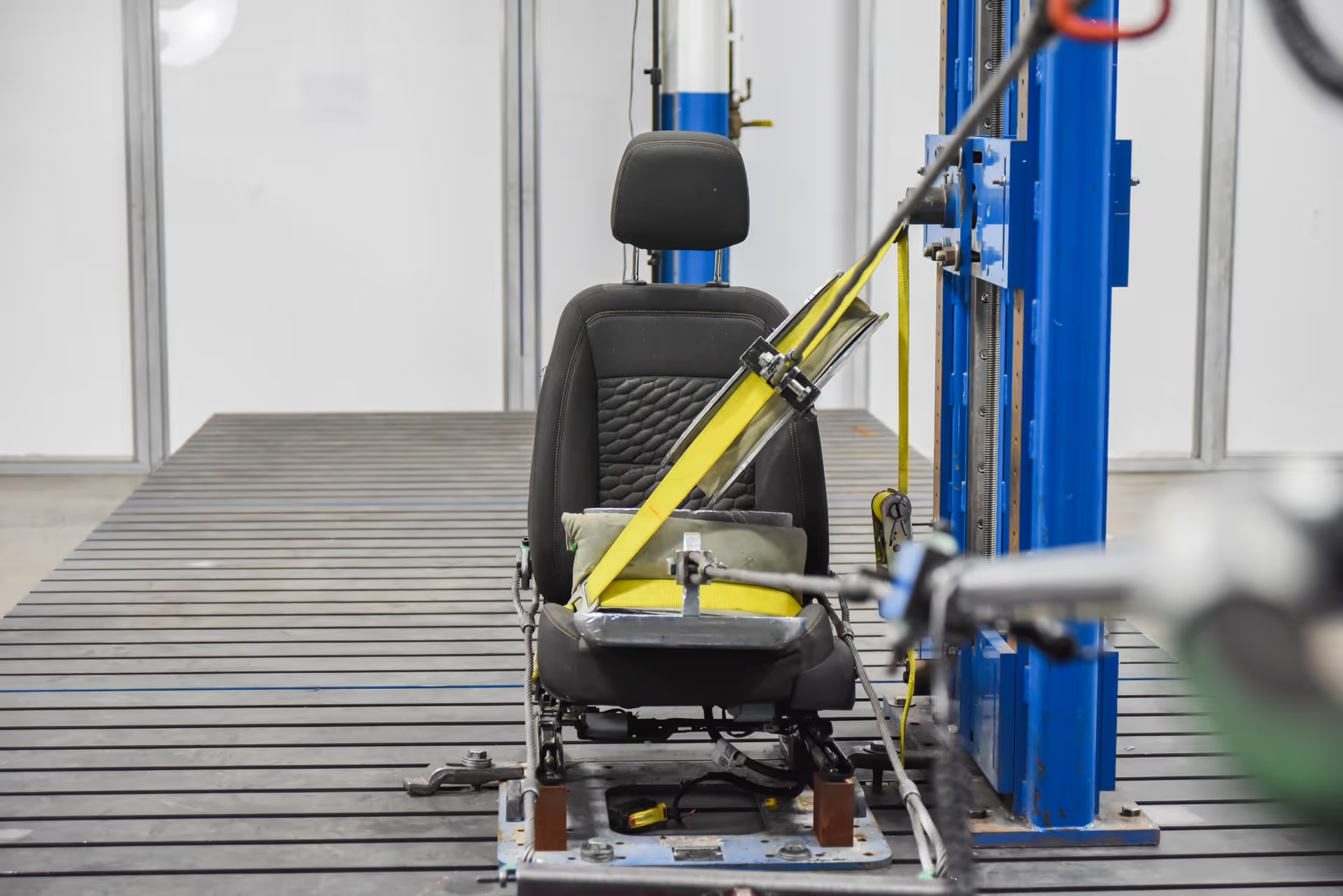
Automotive Seating Testing
MGA Research Corporation offers comprehensive automotive seating testing services, leveraging decades of experience and cutting-edge technology to ensure the quality, durability, and safety of automotive seating systems.
Quick Overview

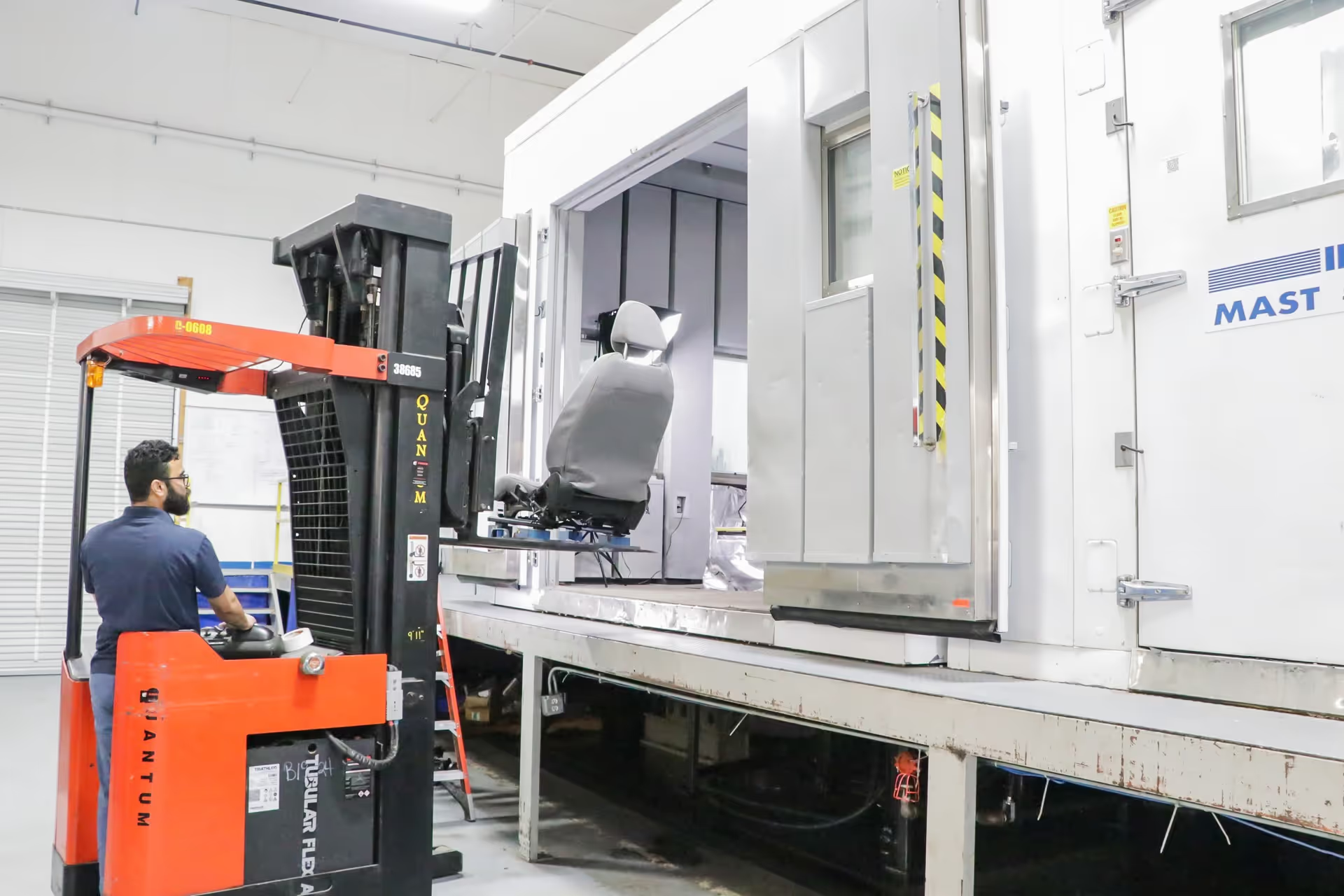
Comprehensive Seating Test Expertise
We offer a full suite of automotive seating system test services, covering all aspects of function validation, durability, quality, and safety.
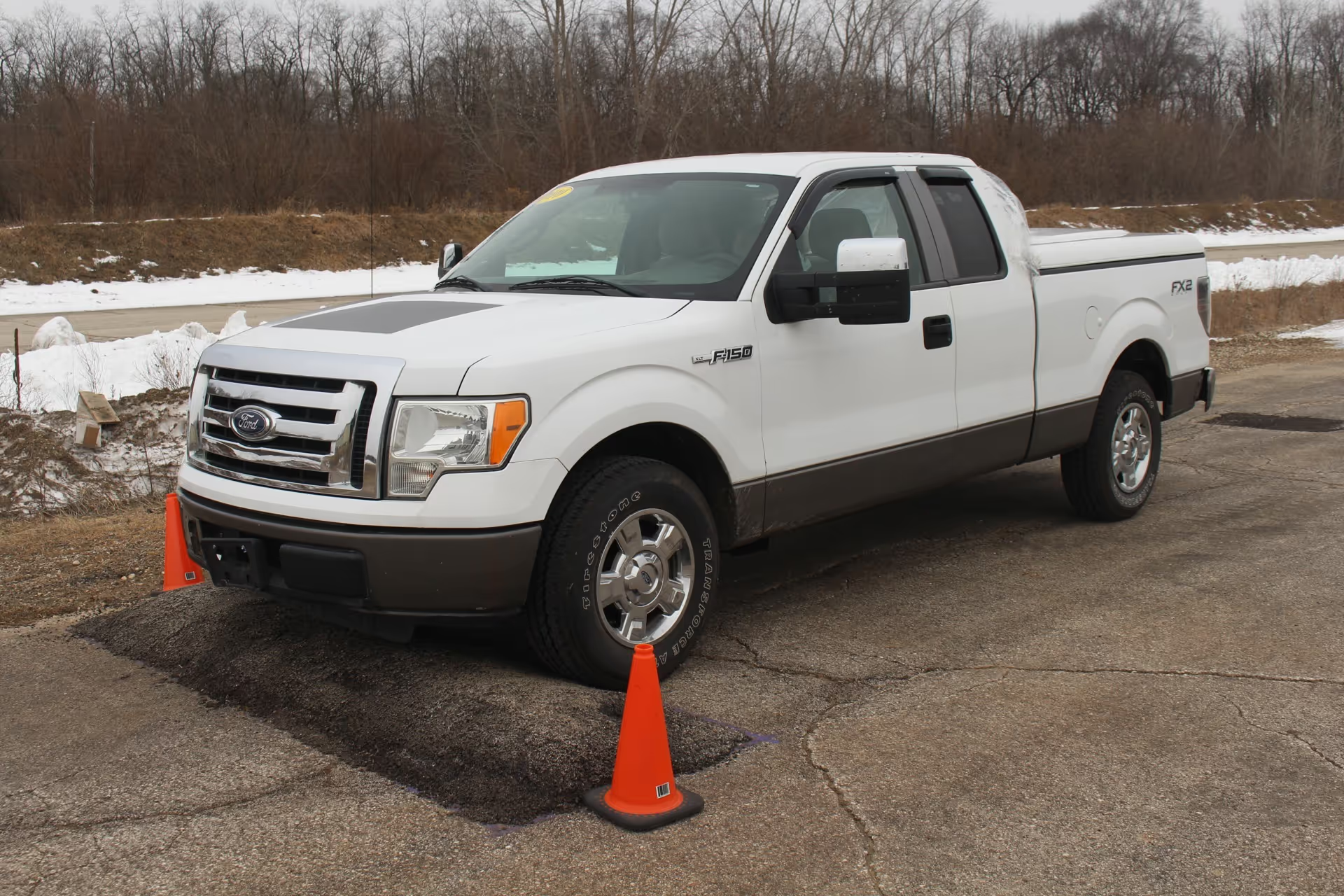
Extensive OEM Experience
MGA is experienced with test standards from all OEMs including Ford, GM, Stellantis, VW, Mercedes, BMW, Volvo, and more.
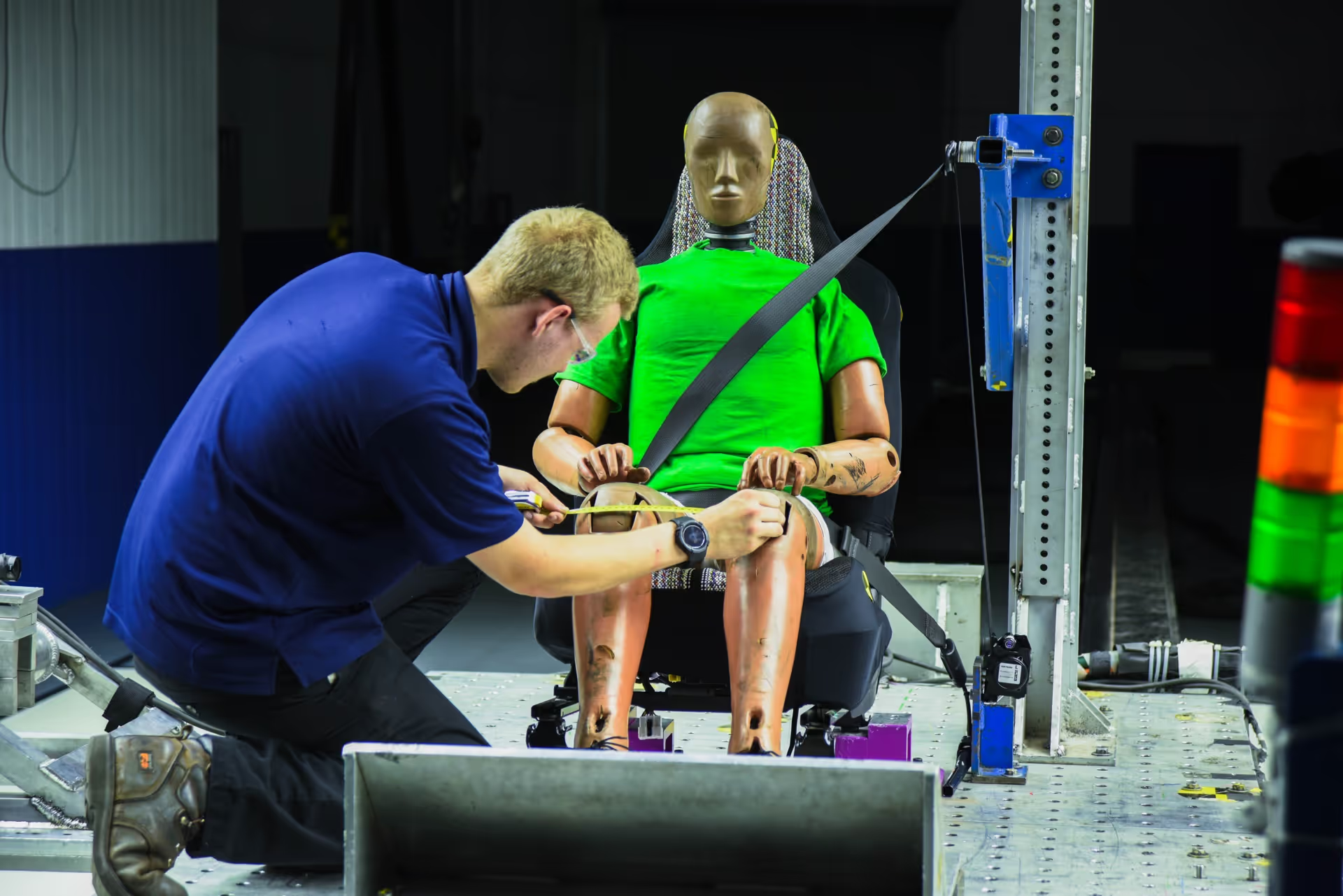
Complete Safety Testing
We perform a wide array of safety tests to both consumer and regulatory requirements, including dynamic sled testing, airbag deployment, and quasi-static testing.
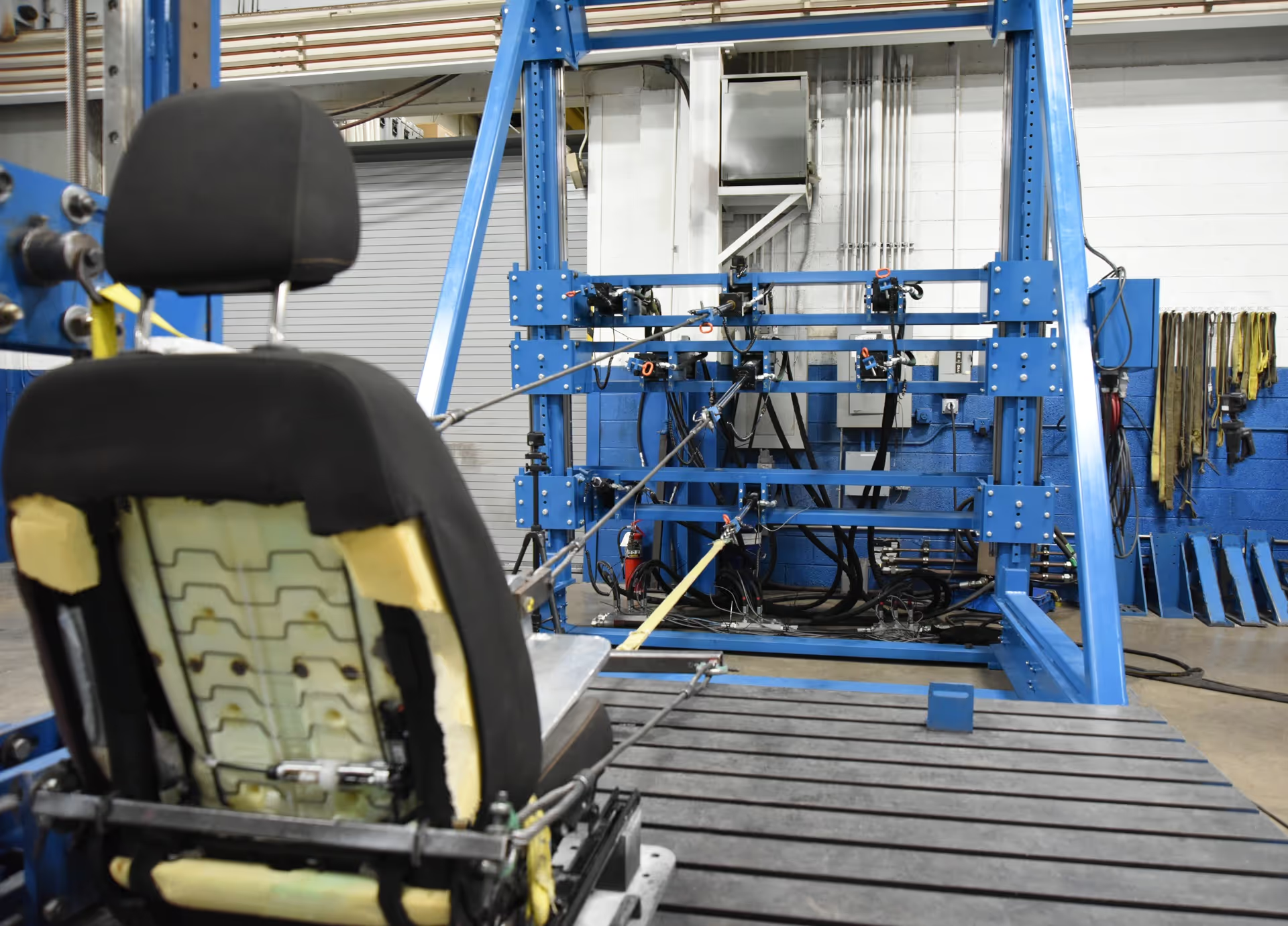
Advanced Technology and Equipment
We utilize cutting-edge technology and equipment, much of which has been developed by MGA, to deliver efficient, accurate, and consistent results across various OEM specifications and regulations.
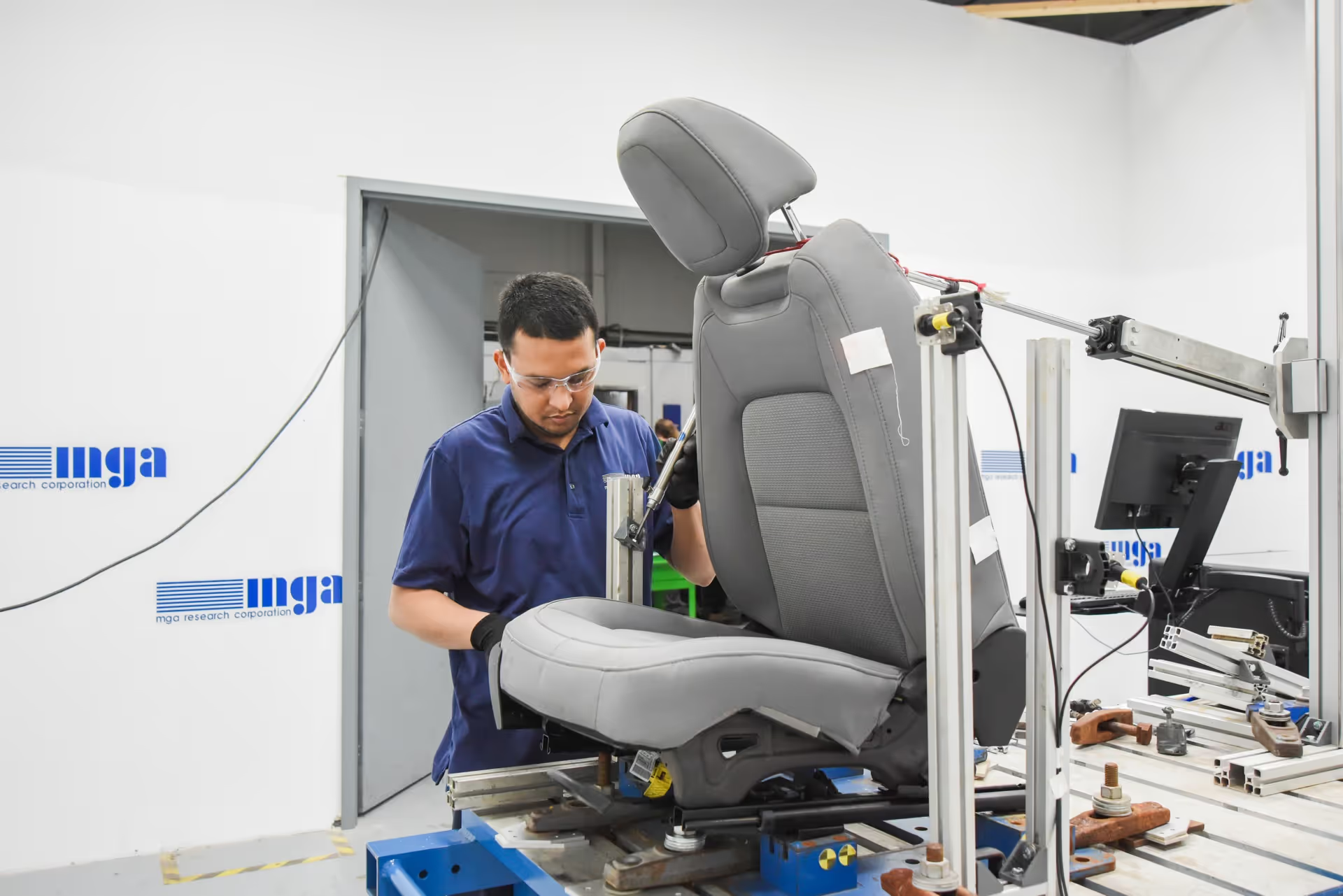
Customized Durability Testing
We provide tailored durability testing solutions using pneumatic, power, servo electric, CAN, and robotic systems to simulate real-world usage conditions.
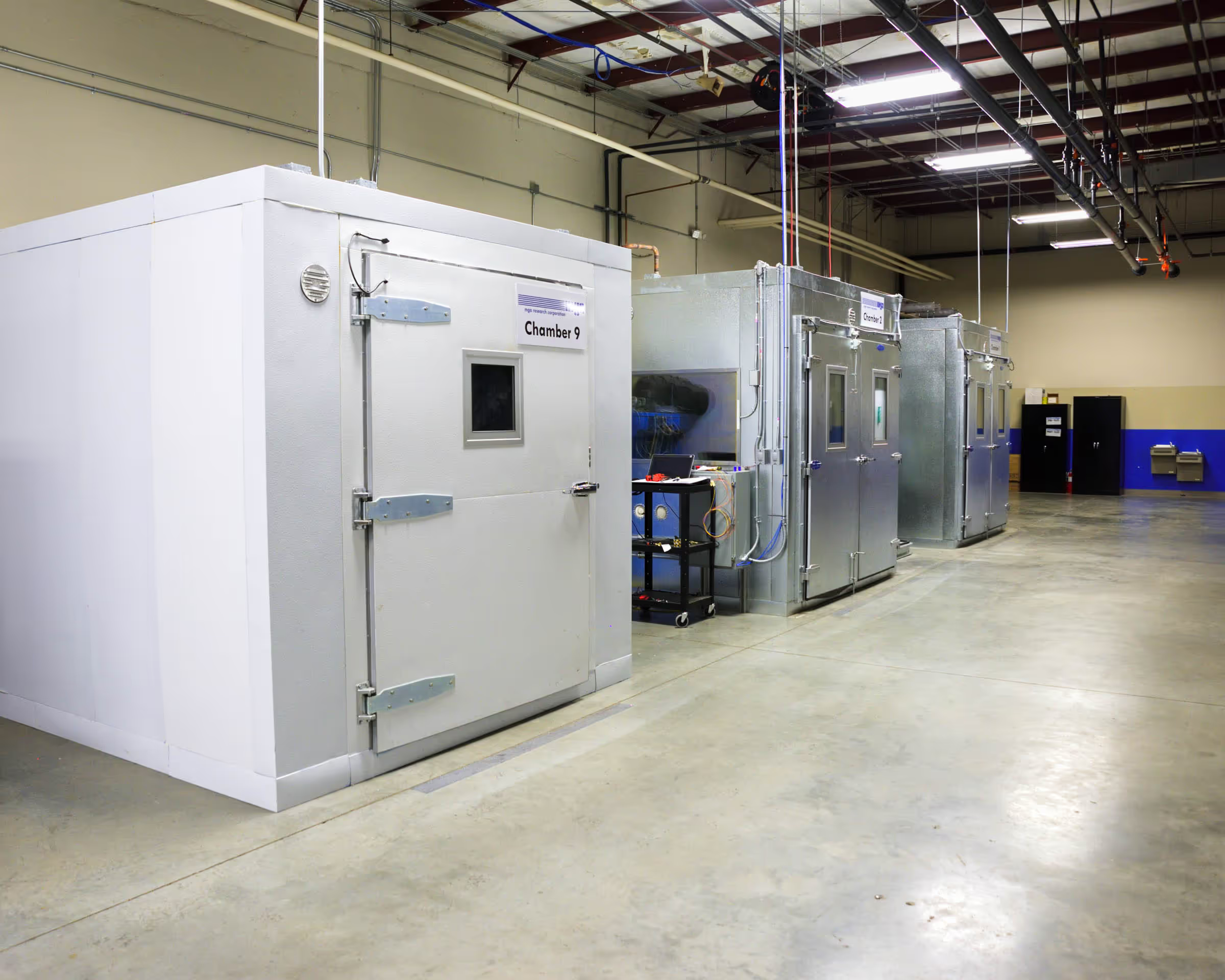
Environmental Simulation Capabilities
We offer a range of environmental chambers to replicate diverse climate conditions, ensuring seats perform optimally in any environment.
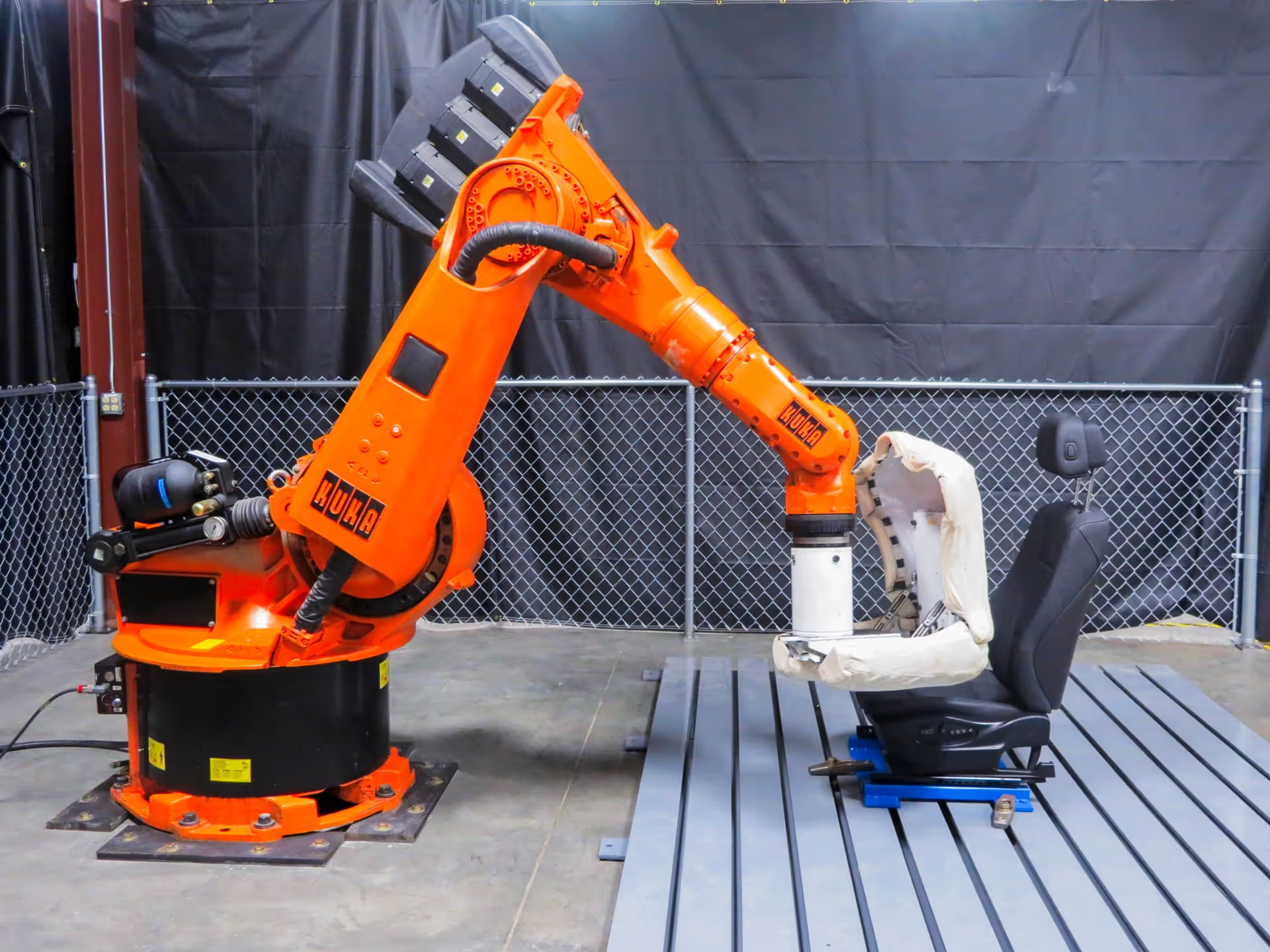
Real-World Fatigue Testing
We conduct realistic fatigue testing using advanced robotics and specialized equipment to simulate human interaction and long term structural and aesthetic durability.

Full DVP&R Project Management
Let our project management team help streamline your validation efforts.
Introduction to Automotive Seat Testing
Over the course of many decades, the anatomy and design of the seat have changed dramatically—from active head restraints and child restraint anchorage systems to seat heaters and back massagers. With these updates, adjusted and new testing requirements and standards have been developed.
MGA Research Corporation is an industry leader in automotive seating test methodologies. With decades of experience, the engineers at MGA have an arsenal of the most up-to-date technology and equipment at their disposal to guarantee efficient, accurate, and consistent results for all specifications and regulations. Our capabilities range from the smallest mechanical components of a seat to the recent integration of sophisticated computer technology and Controller Area Network (CAN) bus control, along with modern innovations in safety/comfort features.
Types of Automotive Seat Testing
Durability Testing
Durability testing in the automotive seating sector assesses the lifetime resilience and longevity of all components and features. This testing is designed to simulate the years of use that will be seen in real-world examples. Listed below are the durability test types conducted at MGA:
Life Cycle Durability
MGA has the capabilities to perform cyclical custom durability testing with a variety of our MGA-developed controllers, including pneumatic, power, servo-electric, or robotic. These capabilities include the following:
- Force/Current Feedback
- Digital and analog limit switches for risk mitigation and cycle integrity.
- Data recording is available at any intervals.
- Cycling capabilities at ambient or extreme temperatures.
- Custom load/fatigue profile capabilities with load/displacement control with servo-electric cylinders.
- Monitoring and control for complex systems (i.e., pneumatic comfort systems).
Environmental Durability
One of the core components of durability testing is the environmental chambers. At MGA Research, these include a range of sizes, from reach-in chambers for small components to large drive-in chambers that can fit full vehicles. These chambers can simulate the varied conditions that a seat may experience in any part of the world. These chambers are capable of the following:
- Temperature cycling of -40°C to 140°C
- Adjustable/programmable lamp setups to achieve simulated sun load surface temperatures.
- Fully customizable/programmable profiles with ramp times/rates and soaks.
- Temperature/humidity logging capabilities.
- Corrosion chamber with temperature control and fogging atomizer.
Mechanical Durability
Real-world fatigue testing is also a tenet in the seating durability test log. The simulation of real human beings sitting in seats is integral for ensuring material/structural integrity. Test types include the following:
Ingress/Egress Testing
- Seat foam and trim durability
- Load-controlled KUKA KRC2 Robot for seat foam and trim durability testing
- Simulated real-world motion and loading capabilities
- Custom forms and end-effectors available

Jounce & Squirm Testing
- Trim and structural durability testing
- Variable table stroke and frequency, squirm angle, frequency, and load capacity
- SAE Back and Butt load forms to test both seat backs and cushions
Hydraulic Fatigue Testing
- Structural fatigue testing.
- Load-controlled & displacement-controlled capabilities
- Hydraulic actuators of various stroke and load ratings
- Various load applicators and attachment methods
Safety Testing
Safety testing is required by law to ensure that vehicle seats protect during real-world collisions. Testing includes evaluations for seatbelts, seat anchor points, airbag deployments, and the capability to withstand the forces seen in vehicle crashes.
Static
Static safety testing simulates a crash situation in a controlled manner that slows the event down. Much of the testing simulates a forward or rearward impact that tests the seat structure. The regulations are geared to test the strength of specific components, such as:
- Seat anchorages
- 9 cylinders can apply loads in excess of 5,000 pounds each.
- Capable of running FMVSS 207/210 and FMVSS 225
- Belt anchorages
- Head restraints
- Child restraint anchorage systems
- Tracks
- Recliners
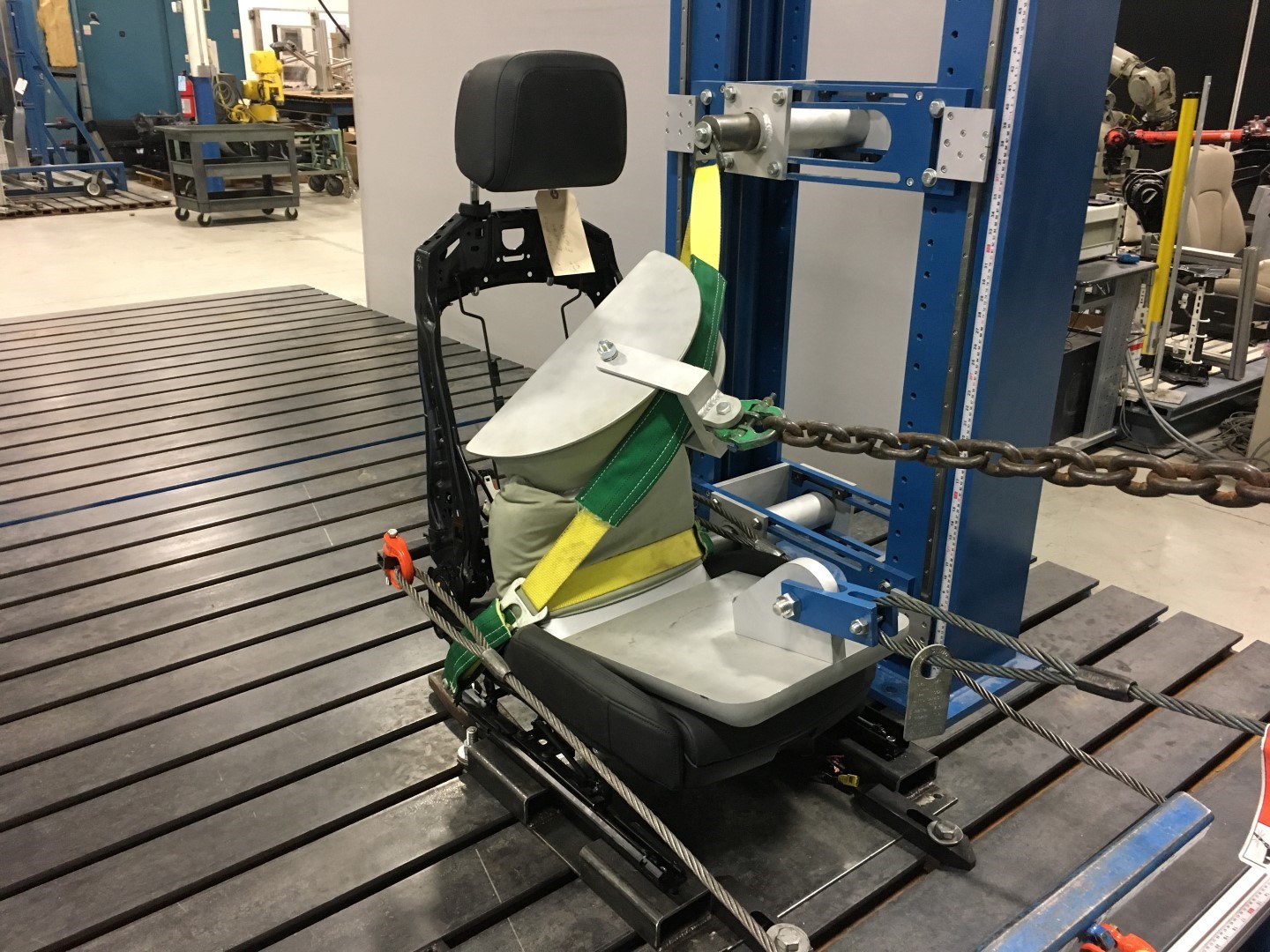
Load cells and displacement sensors play a role in most of the data collection required for these tests; however, angle transducers and strain gauges can also support in specific scenarios.
Dynamic
Sled testing is a dynamic testing method used to evaluate vehicle safety components, including restraint systems, without the need for a full-scale vehicle crash. A sled carrying a crash test dummy and components is accelerated to simulate the forces of a crash. This allows the use of precise instrumentation to evaluate components, dummy kinematics, and injury values during a collision. The controlled environment ensures testing can be repeated with high accuracy.
Quality and Performance Testing
Vibration testing is key in verifying the integrity and reliability of a seat. Electric and hydraulic shakers are both used to carry out such testing, with each having advantages for certain types of evaluations. For more information on our electrodynamic shakers and multi-axis simulation tables, visit our Vibration Testing page.
Seat Dimensional Checks
Safety regulations specify certain dimensions that components must meet when designed and produced, while others use specific values during test setup and requirement calculations. These non-destructive measurements include:
- H-point determination utilizing the SAE J826 OSCAR manikin
- Head restraint dimensional evaluations
- Child seat anchorage dimensional evaluations
- Weight and center of gravity determinations.
Testing Equipment and Technology
Automated Test Systems
Automated tests systems provide setups that are consistent and are able to run continuously for durability tests. MGA has a fleet of KUKA robots for performing ingress/egress simulations as well as a variety of automated cycling equipment and CAN bus integration capabilities.
Servo Systems and Actuators
For force or displacement-controlled feedback, servo systems and actuators are utilized frequently in durability or static testing. Pneumatic systems are commonly used in product life cycling due to their ability for rapid cycling. Servo-electric actuators provide precise control for smaller load requirements, while hydraulic actuators are used for high-force applications.
Measurement and Data Acquisition
MGA has a vast inventory of sensors that are regularly utilized to run or enhance data collection throughout testing:
- Load cells (50lbf to 100,000 lbf)
- Displacement sensors and tracking (LVDT, string potentiometers)
- High-speed cameras (1,000+ fps)
- Real-time data logging and analysis
- Strain gauges for stress-strain analysis
Environmental Chambers
- Temperature and humidity control systems
- Solar simulation equipment
- Corrosion testing chambers
- ASTM B117
- Drive-in chambers for complete vehicle seats
- These chamber range in size from 16’ x 20’ to 16’ x 25’
- Environmental range of chambers is -40°C to 140°C
Industry Standards and Compliance
MGA’s experience with automotive seating test standards includes both internal OEM specifications and regulatory standards. Multiple locations are also approved and hold contracts with the NHTSA for various FMVSS tests.
OEM Specifications
- BMW and Mercedes-Benz
- Ford
- General Motors
- Honda
- Hyundai
- Rivian
- Stellantis testing
- Tesla
- Toyota
- Volkswagen Group
Regulatory Standards
- FMVSS 200 Series
- FMVSS 302 (Flammability of interior materials)
- ECE regulations for European markets
- Australian Design Rules
Industry Standards
- SAE standards for automotive seating
- ISO standards for testing methodologies
- IIHS and NCAP requirements
- Global safety regulations
Testing Methodologies
Test Planning and Design
Each MGA location and its associates are set up to support with test planning and design. Our team utilizes its expertise to work with customers on full DVP&R test planning, such as sample preparation requirements, test sequence optimization, and overall project management and sample tracking. Our fixture group also offers fixture design and fabrication as an added convenience for any type of test plan.
Test Execution
Each lab is accredited by A2LA to ISO/IEC 17025:2017 and follows strict quality control guidelines during test execution. Each setup follows a specific procedure to ensure all steps are completed successfully. Sensor calibration and other test parameters are documented throughout the process. For durability tests, regular checks are performed and logged 24 hours/day, 7 days/week.
Choosing Automotive Seat Testing Solutions
Seating testing plays an essential role for cost optimization by potentially reducing development time and creating more efficient validation processes. The sheer number of tests that one single seat must go through can assist in identifying design issues early and therefore minimizing recall risks. MGA’s decades of experience in seating testing can aid in cost optimization through reliable, data-driven testing that supports the quality of the overall product.
With 10 facilities strategically placed throughout North America, MGA’s distinct advantage lies in the wide range of test equipment available to support any type of project. Our team is constantly collaborating with customers to determine the most effective solutions, considering turnaround time and technical expertise.
For more information on automotive seat testing, please contact us through our form below.
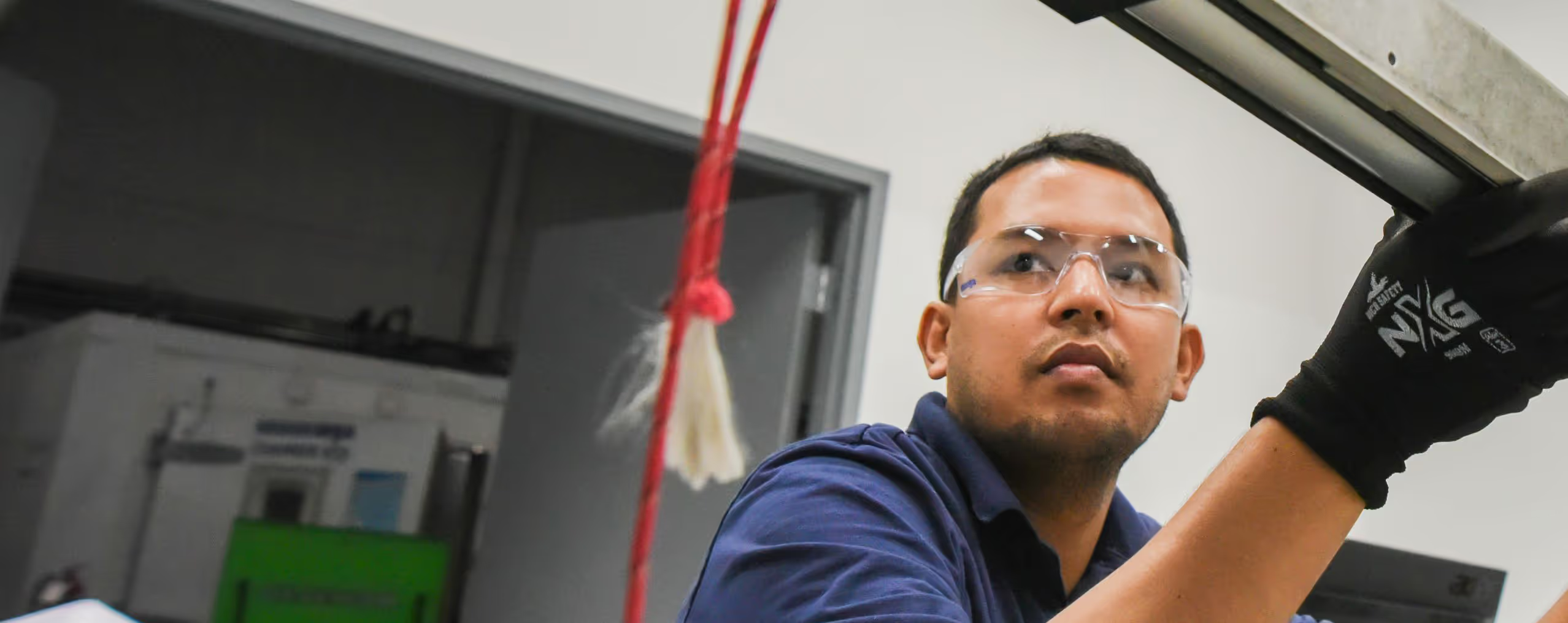
Ready to Get Started?
Let's discuss your testing needs and how MGA can help. Our team is ready to provide the expertise and solutions you're looking for.
